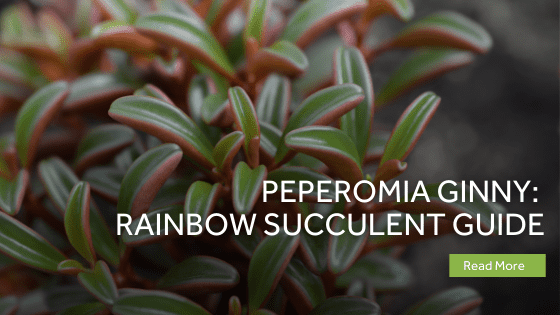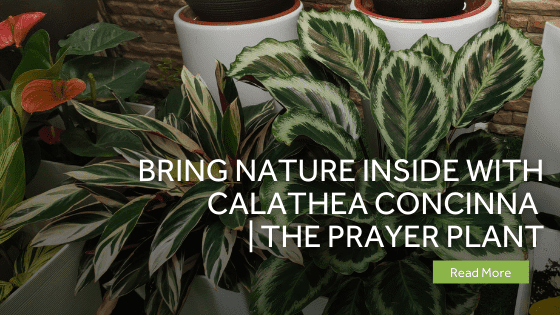The Peperomia Clusiifolia Ginny is a plant with a rainbow of colors and shapes. It’s been around for decades and continues to captivate people with its diversity. Let’s explore this lovely plant in detail below!
Many different shapes, sizes, and colors are available in the Peperomia Ginny, making it an excellent choice for any home. Depending on the time of year, you can grow this succulent-like plant indoors or outdoors. The bright colors are great for bringing life into your home without much effort.
You won’t get bored with this cute plant, as many varieties are available. As well as being easy-to-care-for plants, they also act as great air purifiers, removing toxins from the air. This is due to the high levels of silica in their leaves, which helps trap harmful pollutants. This advantage makes them a great choice for your home, especially if you have pets or young children. Of course, it’s always important to give them just enough light, but not too much, and to water often. Let’s take a look at some of the best varieties you can buy right now!
Table of Contents
Peperomia Ginny Overview
Succulents like Peperomia Clusiifolia Ginny have been around for decades, and their diversity continues to captivate people. This article will explore the different colors, shapes, and uses of this lovely plant and how to grow it successfully in your home.
The Peperomia genus has many different species and cultivars that vary in size, shape, and color. The Ginny is a cultivar of the Peperomia Obtusifolia. However, it is quite striking with its colorful leaves, and it grows well indoors-which makes it a popular choice for those who do not have greenhouses or outdoor greenhouses.
The stem thickness depends on the pot size and frequency of watering. If you water it often, the stem will be thin, but if you wait too long to water it, it will become quite thick.
The Peperomia genus is native to both tropical and subtropical regions of South America, Central America, and Mexico. This means that it can grow outside these tropical regions, but it will not survive harsh winters. The leaves can vary in color and shape, but most tend to have a smooth texture. Some leaves can also have a reddish hue.
Peperomia Ginny also goes by the names “Red Edge Peperomia,” “Tricolor Peperomia,” and “Rainbow Peperomia Ginny.”
| Botanical Name | Peperomia Ginny |
| Family | Piperaceae |
| Genus | Peperomia |
| Origin | South America, Central America, and Mexico |
| Sunlight | Bright, indirect light |
| Watering | Once a week |
| Soil | Well-drained soil |
| Temperature | 68 ºF to 75ºF (20º C to 24º C) |
| Propagation | Stem cuttings, leaves, or tip cuttings |
| Re-Potting | Can grow for many years without repotting |
| Pests and Diseases | Doesn’t have any problems, but some potentially harmful insects are to watch out for |
| Toxicity | Non-toxic to both cats and dogs |
Peperomia Ginny Features
Peperomia Clusiifolia Ginny is a cultivar of Peperomia Obtusifolia. As a result, its name is derived from its parent plant, which comes from the genus name Peperomia.
Height, Size, Spread
Rainbow Peperomia Ginny is a type of succulent that can grow up to two feet tall. The height of this plant can vary depending on how often you water it and the location. Miniature Peperomia Ginny plants that are not watered often will grow taller than those that are. The stems will also grow thicker over time if just enough water is given to the plant.
The width of Peperomia Ginny can vary depending on the species, but most are about half an inch thick. The thickness can also depend on the amount of water the plant is given. If it doesn’t receive a lot of water, the stem will be thin, but the stem will be thicker and sturdier if it gets a lot of water.
This plant is a succulent, meaning it stores water in its stem and leaves. As a result, it can be challenging to kill, making it a great choice for those who don’t have much of a green thumb.
Leaves
The leaves of the Peperomia Ginny can vary in color and shape, but most tend to have a smooth texture. Some leaves can also have a reddish tinge to them. The leaves can be round, oval, or flat and come in different colors: purple, pink, red, yellow, or green.
Flower
Peperomia Ginny plants produce tiny, unscented flowers that sit on top of long spikes.
Toxicity
Peperomia Ginny is a pet-friendly plant that is non-toxic, so you do not have to worry about your pets injesting it.
Deer and Rabbit Resistance
Peperomia Ginny is a deer and rabbit resistant plant. Animals don’t find its taste appealing. This succulent has a waxy coating on the leaves, which tastes very bitter.
Peperomia Care Guide
This plant is straightforward to take care of and returns every year if you don’t overwater it. It’s a great healthy plant for those who don’t have a lot of time to take care of their tropical plants or for those who live in an area with a cold winter, as it can survive without being watered for a few weeks.
Ideal Growing Place
Indirect, bright light is ideal for the Peperomia Ginny. This plant does well in areas where the temperature is cool to average. It can survive in temperatures as low as 45 degrees, but it will stop growing at colder temperatures. If you live in an area with a cold winter, you can keep your Peperomia plants indoors near a window for continued growth.
Peperomia Ginny are great outdoor or indoor plants. It can easily survive indoors and outdoors, but it will grow taller if kept indoors with bright, indirect sunlight.
There is no particular growing season for Peperomia Ginny to grow any time of year. However, it grows in the winter months because it stores water in its leaves and stem.
Peperomia Ginny can also be grown indoors or outdoors. If grown indoors, Peperomia Ginny needs at least 4-6 hours of direct light per day to thrive. They grow best in temperatures between 68-75 degrees Fahrenheit.
Water
Peperomia Ginny needs to be watered when the soil is dry to the touch. Water your plant once a week enough so that some water runs out of the drainage holes. If you live in an area with a cold winter, you will need to give your plant a more thorough watering to keep the soil moist, as it won’t rain as often.
Sunlight
Peperomia Ginny likes the sunshine and will grow well in an area that gets partial sunlight. However, this plant does not do well with direct sun, so you should be sure to only place it in a location with partial sun.
Temperature
This plant can tolerate various temperatures, but it does best in temperatures between 68-75 degrees Fahrenheit. If the temperature is too cold, the plant will stop growing. Therefore cold drafts should be avoided. The leaves will wilt if the temperature is too hot.
Soil
Peperomia Ginny doesn’t prefer a specific soil type, but it does best in well-drained soils. You can achieve this by mixing sand, perlite, or vermiculite into your soil.
Humidity
Peperomia Ginny thrives in a high humidity environment, but it is not required for the plant to live. You can increase the humidity around your plant by placing it near a water source or by using a humidifier.
Fertilizer
Peperomia Ginny doesn’t need to be fertilized often, but you can give it a diluted liquid fertilizer once every month.
Pinching/Pruning
Peperomia Ginny doesn’t need to be pruned often, but you can pinch off new growth near the end of each branch to make your plant grow bushier. You can also trim off dead leaves periodically as well.
Potting and Re-Potting
Peperomia Ginny doesn’t need to be repotted often. It can stay in the same pot for up to several years. However, if the roots start growing through the drainage holes of its current pot in the spring, they will need to be repotted.
Growth Zone
Peperomia Ginny plant needs to be kept in a place where it will receive moderate sunlight. If the plant is not receiving enough light, its leaves will become long and spindly. If it’s receiving too much sunlight, its leaves will become brown and crispy.
Common Pests, Toxins, Diseases & Other Problems
The Peperomia plant doesn’t have any problems, but some potentially harmful insects are to watch out for. Every few days, you should check your plant for aphids, mealybugs, whiteflies, and spider mites. If your plant starts looking droopy or the insects are present, you can spray your plant with an insecticide.
Propagation
This plant’s stem cuttings, leaves, or tip cuttings all work well for propagation.
- Put a light rooting mixture on the ends of the roots and dip them in rooting powder.
- Ideally, you should propagate the plants in summer and spring.
- The leaves and tips will root quickly.
- Cut leaf cuttings underneath the bottom joint, removing the lower leaves.
- For the protective callus tissues to form on the cuts, the cuttings must be placed on a clean surface for a few hours.
The division process is also used to propagate.
- More plants should be divided when they are potted.
- You should remove and separate them into small pieces, ensuring a few roots are also attached.
- Ensure the top of the mixture is completely sealed after placing the cuttings or divisions.
- This plant is semi-succulent, so higher humidity levels are harmful.
- Plant the cuttings in their permanent positions once the roots have formed.
Peperomia Ginny Mature Timeline
Peperomia Ginny plants will take a while to reach maturity.
The growing process can take anywhere from 6-12 months for a new plant to reach maturity, and it will slowly grow bigger over time.
Peperomia Ginny FAQ
Why Does My Peperomia Ginny Plant Have Drooping Leaves?
The Peperomia Ginny plant is known for its drooping leaves. This leaf drooping is due to too much moisture present in the dirt. When this occurs, you should remove the excess water from the pot and allow it to dry completely. For best results, you should wait a few hours before watering it again or risk further damage. If you continue to have issues creating drooping leaves on your plants, give them more light exposure and ensure they are not in a dark environment.
How Big Does Peperomia Ginny Get?
This tricolor Peperomia plant can grow to be 12 inches in height, but this will depend on its growing conditions, however, if. It also lends itself well to containers, so if you are interested in creating a colorful addition to your balcony or porch, this could be the Peperomia plant for you! Its size will depend on the type of care it receives and how healthy it is.
Are Peperomia Ginny Plants Toxic to Cats, Dogs, and People?
Peperomia Ginny plants are non-toxic to both cats and dogs, making them an excellent choice for those who have pets. However, they should not be eaten by either animal, as this can cause stomach issues. These tricolor Peperomia plants are also non-toxic to people to be safely used in homes with children.
Are Peperomia Easy to Care For?
This is a question often asked by those interested in adding one of these tricolor plants to their home. The answer, fortunately, is yes- Peperomia Ginny plants are easy to care for as long as you are aware of their specific needs. One of the reasons Peperomia Ginny plants are so easy to care for is that they can be grown indoors and outdoors. They do well in most soil types and can tolerate a wide range of temperatures. In addition, they do not require a lot of direct sunlight and can thrive in both high and low humidity levels.
Is a Peperomia Ginny a Succulent?
Peperomia Ginny is a succulent. This means that it is a plant that stores water in its leaves, making it an excellent choice for those who are often forgetful about thoroughly watering their plants. Succulents come from various families, but they all have one thing in common- they can store water in their leaves. This makes them a great choice for those who live in dry climates or those who often forget to water their plants.
Is Peperomia an Indoor Plant?
Peperomia Ginny can grow indoors due to its tolerance for low indirect light and low humidity levels. This makes it a great option for those who do not want to spend time caring for their new plants during the winter months. It also does well in containers, making growing it on your patio or porch since it does not require direct sunlight.
Does Peperomia Ginny Like to Be Root Bound?
This is a tricolor plant that does not need to be root bound. It can thrive in various types of environments due to its adaptability, even though it prefers constant drainage and a well-draining soil mixture. What makes this tricolor plant so unlike many other options on the market is its ability to grow both indoors and outdoors, making it easy for those with limited space.
Why Are My Peperomia Ginny Leaves Curling?
The leaves of Peperomia Ginny are curling in an attempt to protect the plant from excessive moisture. If you have noticed that your Peperomia Ginny is curling, you need to remove the excess water and dry it before watering it again. This will help to prevent any permanent damage. If this does not work, then it means that something is preventing proper drainage of water from reaching the plant’s roots. This could be caused by poor soil mixture quality or too many dead green leaves in the pot.
The Bottom Line
Peperomia Ginny are low-maintenance plants with a rainbow of colors and shapes. This tricolor plant is great for bringing life into your home without much effort or special skills. They act as air purifiers to remove toxins from the air and can be grown both indoors and outdoors, depending on the time of year. So take our care guide advice and make sure this tricolor plant thrives in your environment!
Last Updated on August 23, 2022 by Gustaf Johansson




